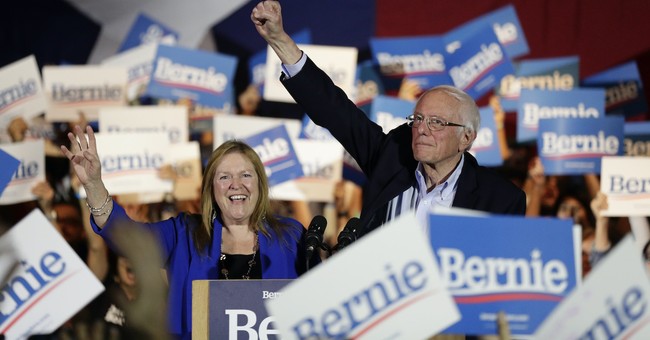
Democratic presidential candidate Sen. Bernie Sanders, I-Vt., right, with his wife Jane, raises his hand as he speaks during a campaign event in San Antonio, Saturday, Feb. 22, 2020. (AP Photo/Eric Gay)
The key selling feature of the Bernie Sanders candidacy, at least at this point, is the idea that a septuagenarian Bolsehvik has the charisma it takes to turn out marginalized voting populations, like those with advanced degrees in Queer Harpsichord Studies, who have never bothered to vote in the past and thus expand the electorate to make up for votes he will lose. It sounds sort of ludicrous on its face but the American electorate fell for Hope-and-Change, so who knows.
“To defeat Donald Trump, the simple truth is we are going to need to have the largest voter turnout in the history of American politics — that’s a fact,” Sanders said at a recent rally in Exeter. “That means we are going to have to bring people into the political process who very often have not been involved in the political process.”
The Washington Post’s Greg Sargent claims to see evidence that this is true. Operative word: claims.
But, crucially, even as Sanders has surged, he’s also broadened his support among key demographics. I’ve created this chart, comparing Sanders’s performance among these subgroups of Democratic and Dem-leaning independent voters in January with his performance among them in the new poll…
As you can see, Sanders has substantially expanded his performance among moderate/conservative Democrats, to 28 percent. He’s more than doubled among African Americans, also to 28 percent.
The New York Times is calling this out as a fantasy:
It is the most politically provocative part of Senator Bernie Sanders’s campaign pitch: that his progressive movement will bring millions of nonvoters into the November election, driving record turnout especially among disaffected working-class Americans and young people.
And yet despite a virtual tie in Iowa, a narrow victory in New Hampshire and a big triumph in Nevada, the first three nominating contests reveal a fundamental challenge for Mr. Sanders’s political revolution: He may be winning, but not because of his longstanding pledge to expand the Democratic base.
The results so far show that Mr. Sanders has prevailed by broadening his appeal among traditional Democratic voters, not by fundamentally transforming the electorate.
There was no sign of a Sanders voter surge in New Hampshire either, nor on Saturday in Nevada, where the nearly final results indicated that turnout would finish above 2016 but well short of 2008 levels, despite a decade of population growth and a new early voting option that attracted some 75,000 voters. The low numbers are all the more striking given the huge turnout in the 2018 midterm elections, which was the highest in a century.
There was also no clear evidence across the early states of much greater participation by young people, a typically low-turnout group that makes up a core part of Mr. Sanders’s base and that he has long said he can motivate to get out to the polls. And Mr. Sanders has struggled to overcome his longstanding weakness in affluent, well-educated suburbs, where Democrats excelled in the midterm elections and where many traditionally Republican voters are skeptical about President Trump’s performance, meaning they could be up for grabs in November.
This strikes me as true as far as it goes. Democrat turnout has been substantially off as compared to the last truly contested primary in 2008. Sanders is winning handily by holding onto what was his 2016 base and adding a small number. If that is the way the general election shakes out then Sanders will get thrashed.
On the whole, the NYT analysis seems more like a narrative floated by the DNC or by another [cough…Bloomberg…cough] campaign to try to make the case that Sanders is simply not electable.
What the NYT is not considering is that it is the excitement generated by Sanders–the fantasy of a summary execution or two, or maybe imagining a relaxing evening watching half-starved kulaks hand-dig a ship canal–that is keeping the Democrat turnout numbers up. That without him, there is literally no reason to come out to vote. Because Sanders’s strategy is to mobilize the politically disenfranchised, it would follow that those people did not turn out in the primaries because they are not tuned into politics and into the presidential campaign at this point, so it is folly, for the Democrats and for the GOP, to suppose they will not materialize in November.
Though I’d be among the first to say that I think the Democrats give up more existing voters than Sanders can mobilize new ones, I think this analysis falls far, far short of making any case for claiming that Sanders’s strategy is not or cannot work.
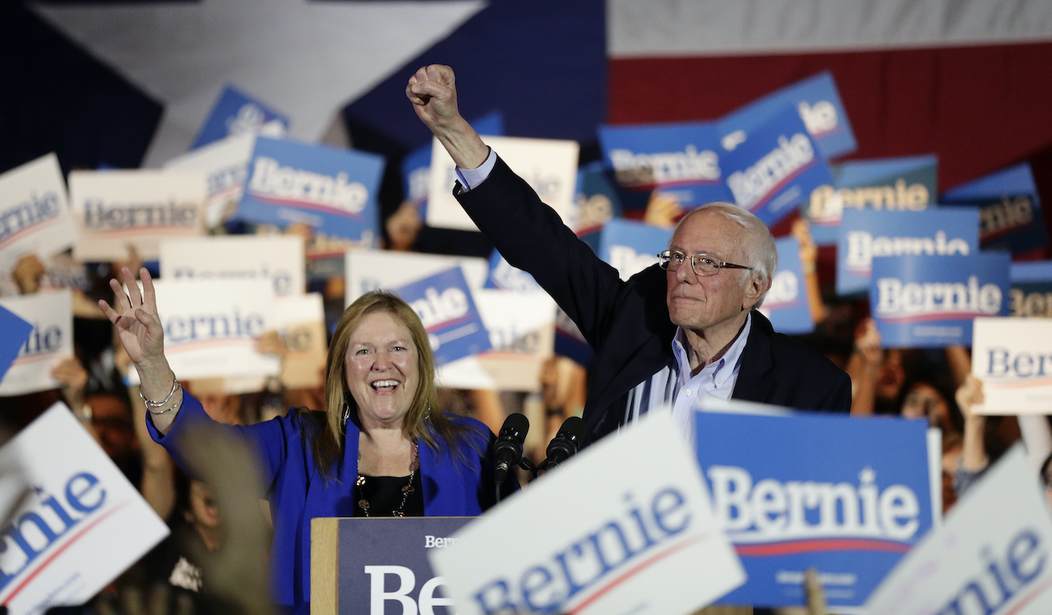
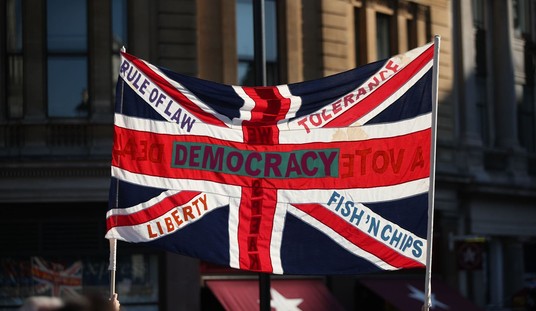



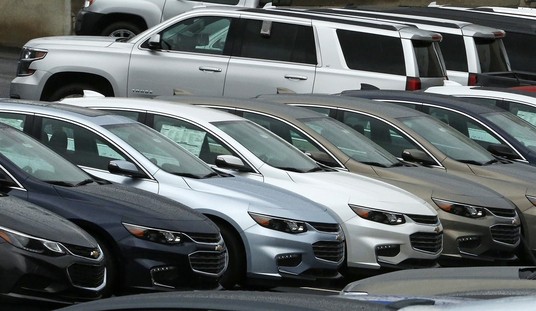


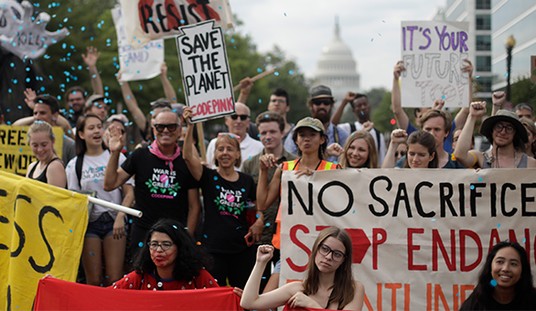



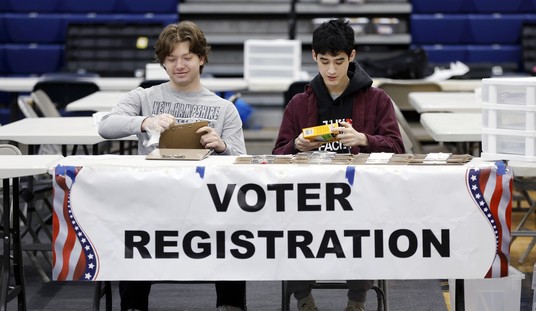
Join the conversation as a VIP Member